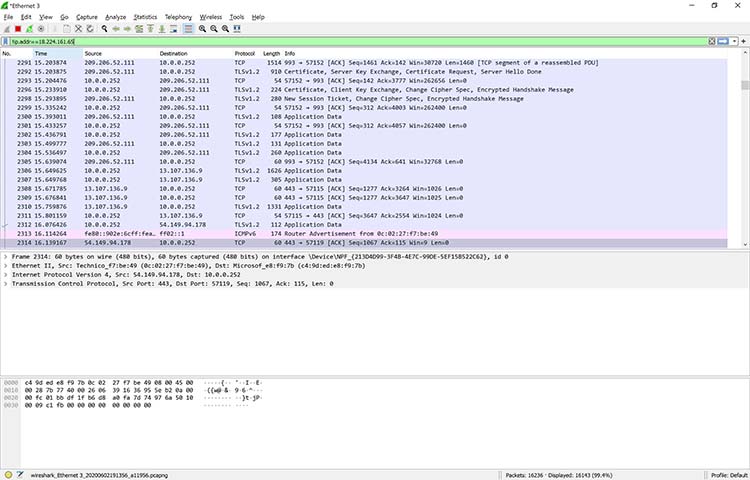

However, DNS traffic normally goes to or from port 53, and traffic to and from that port is normally DNS traffic, so you can filter on that port number.Ĭapture only traffic to and from port 53: port 53 You cannot directly filter DNS protocols while capturing if they are going to or from arbitrary ports. Show only the DNS based traffic: dns Capture Filter Display FilterĪ complete list of DNS display filter fields can be found in the display filter reference The SampleCaptures has many DNS capture files. TCP_Reassembly has to be enabled for this feature to work. As you might have guessed, this takes a DNS request or reply that has been split across multiple TCP segments and reassembles it back into one message. The DNS dissector has one preference: "Reassemble DNS messages spanning multiple TCP segments". Also add info of additional Wireshark features where appropriate, like special statistics of this protocol. XXX - Add example traffic here (as plain text or Wireshark screenshot). The well known TCP/UDP port for DNS traffic is 53. TCP/ UDP: Typically, DNS uses TCP or UDP as its transport protocol.HistoryĭNS was invented in 1982-1983 by Paul Mockapteris and Jon Postel. Note that use of this flag generates a great deal of output, and should only be used if needed.DNS is the system used to resolve store information about domain names including IP addresses, mail servers, and other information.

When parsing and printing, in addition to printing the headers of each packet, print the data of each packet (minus its link level header) in hex and ASCII. For example, additional fields are printed from NFS reply packets, and SMB packets are fully decoded.Įven more verbose output. Also enables additional packet integrity checks such as verifying the IP and ICMP header checksum.Įven more verbose output. For example, the time to live, identification, total length and options in an IP packet are printed. When parsing and printing, produce (slightly more) verbose output. Provides basic information about the packet's source, destination, and type. These options correspond to the following flags in tcpdump. When the option Output > View output below is chosen, the Verbosity option is used to determine how much detail should be output in the view below. A capture on the site-to-site VPN interface will contain all Meraki site-to-site VPN traffic (it will not contain 3rd party VPN traffic). The MX allows users to capture on multiple different interfaces.

Ignore: Optionally ignore capturing broadcast/multicast traffic.Verbosity: Select the level of the packet capture (only available when viewing the output to the directly to Dashboard).Output: Select how the capture should be displayed view output or download.Ports: Select the port(s) to run the capture on.Switch: Select the switch to run the capture on.

The following options are available for a packet capture on the MS:


 0 kommentar(er)
0 kommentar(er)
